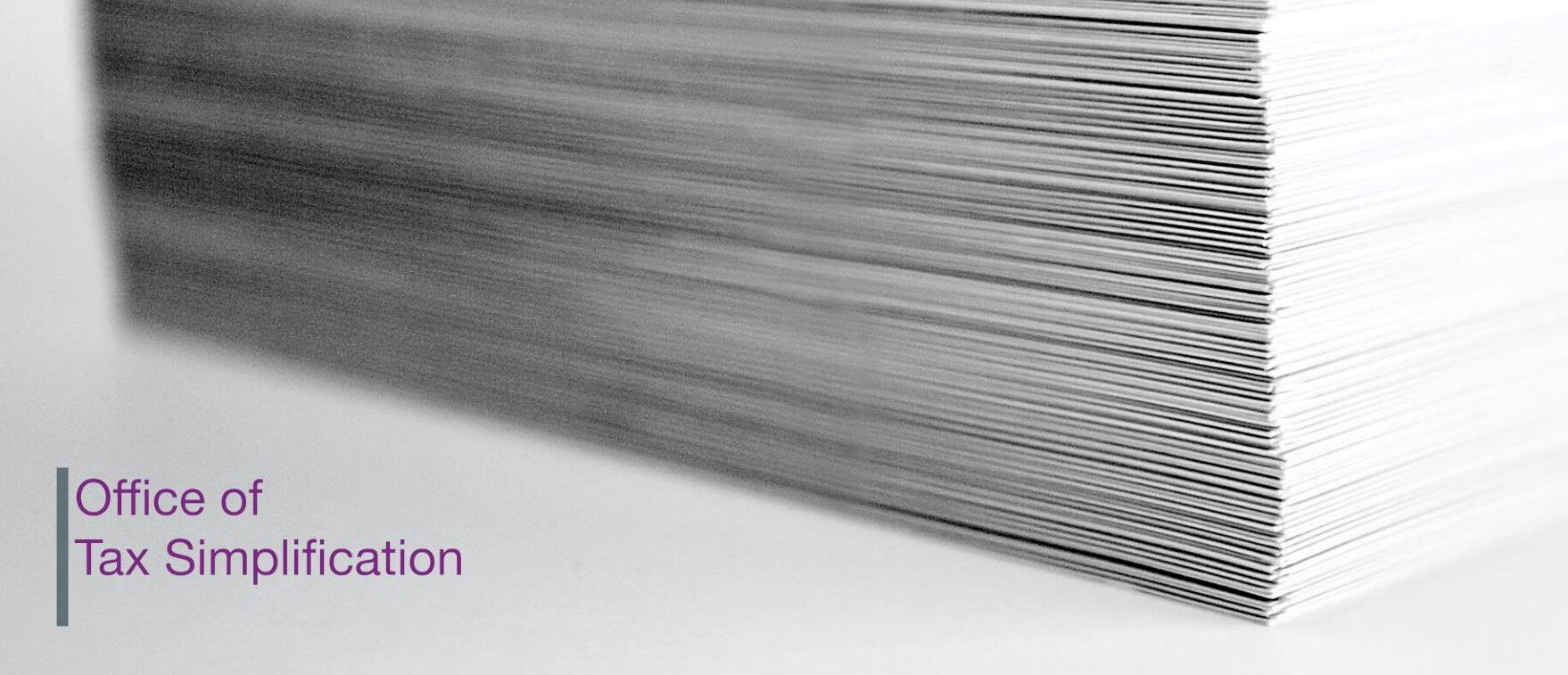Last month, the Office of Tax Simplification (OTS) released their Annual Report, summarising their recent reviews into ‘Capital Gains Tax’, ‘Using Third Party Data’ and ‘The Possible Change to Tax Year End’.
The report also contained highlights of the Treasury’s first five-yearly review of the OTS, which recommended the OTS conduct their own assessment on their interpretation of, or approach to, tax simplification. The latter Review of Simplification report was published on the same day.
The OTS cite their main principles as providing information, data and policy analysis, holistically reviewing tax areas and systems, and highlighting specific practical issues. The activities they carry out to meet these principles include creating publications, organising events, holding informal discussion, and perhaps most significantly, providing advice to the government.
It must be noted, however, the last of these activities has a critical limitation. While the government commissions the OTS to explore issues surrounding tax, their activities must be conducted independently as “it would not be appropriate for the OTS to become involved ‘behind the curtain’ on policy development”.
The OTS’ reviews, are thus to be taken as guidance, rather than guarantees of legislative changes. Nevertheless, the OTS note in their Annual Report the warm reception the government gives to their reviews and the government’s continued contracting of the OTS, most recently in regard to undertaking a review of taxation for hybrid and distance working.
The key recommendations
The OTS’ July 2022 Review of Simplification analyses tax complexity and makes recommendations for tax policy development, including creating a framework for tax policy proposals and changes. The requirement for tax policy to be adaptable is amongst the key considerations outlined by the OTS. Economic, social and environmental factors are constantly influencing tax systems, as is the fast-moving technology industry. These compound to create challenges for policy makers who should ensure that policy-making systems for tax are adaptable, and the rules do not become outdated.
Other key considerations highlighted by the OTS include the possibility of misinterpretation and the burden some taxpayers may face due to administrative costs. The OTS go on to pose recommendations for policy makers in a four-question and six-lens approach.
The OTS recommend asking four questions when making policy:
- Are the rules, their purpose, and their consequences easy to understand and predict? This should take into account whether rules will be practical in everyday life, ensure they are written with clarity, are predictable and plan for the future.
- Are the rules and their administration taking advantage of modern developments, including technology? The OTS suggest that tax systems should be digitised where possible, and this technology should be accessible to as many as possible (with alternatives for those who aren’t able to access them). Policy makers should also work cross-jurisdictionally to account for increasing globalisation, coordinating tax systems, and data collection and exchange where possible.
- Is it easy enough to comply with the rules? The OTS stress that obligations should be clear, and that administrative costs and burdens should be minimised to ensure engagement and compliance.
- Can taxpayers be better supported? This can be done by further minimising administrative costs and burdens and by making guidance and advice accessible.
The OTS then go on to provide six key lenses (which correspond with the above four questions) simplification should be viewed through:
- Communication, education and guidance: guidance should be accessible, and the taxpayer should “readily understand what to do, how to do it, and to know that is has been done right”.
- Compliance and administration: it should, as above, be simple enough for the taxpayer to understand what they need to do to comply with legislation.
- Agents and intermediaries: should be used effectively.
- Policy making and legislation: policy should be simple to understand, make sense, and should fit with other provisions.
- Mechanisms and choices: should meet the governments objectives, interact with each other in a way that makes application simple, and gain insights (where possible) from international equivalents.
- Use of technology: tax interfaces should be helpful, use and collect information appropriately, and be constantly improving.
Other suggestions
A crucial thread running through these questions and lenses is that rules should make sense to the taxpayer. The OTS visit this in their Annual Report when discussing possible alterations to the Tax Year End. They suggest a number of benefits for moving the Tax Year End to March 31st, including that it would make sense to numerous taxpayers as most financial reporting in the UK runs to this date and it would help those filing for Self-Assessment better understand the process.
Another essential thread is that of clarity, mainly that the intentions of the government are clear. The OTS also touch on this when discussing their review of Capital Gains Tax in their Annual Report, noting that the Chancellor commissioned the OTS to identify “areas where the present rules can distort behaviour or do not meet their policy intent”. Tax simplification can thus not be carried out without ensuring that the wording of legislation accurately reflects the intention of the government.
That being said, the OTS go further in noting that the intentions of the government when creating tax policy (e.g., to incentivise new business growth) have wide reaching consequences. They advise the policy design process include ‘what if’ scenarios to ensure that as many consequences are identified so that good intentions are met with good outcomes.
This concept of ‘good outcomes’ is the OTS’ main objective. Though the phrase can be defined in various ways, the OTS define it in their remit as helping to “make a difference to the largest number [of] taxpayers or businesses”. Their ambitions to simplify tax have already been a catalyst for meaningful debate and will hopefully see legislation improve for the benefit of as many as possible in the future.

